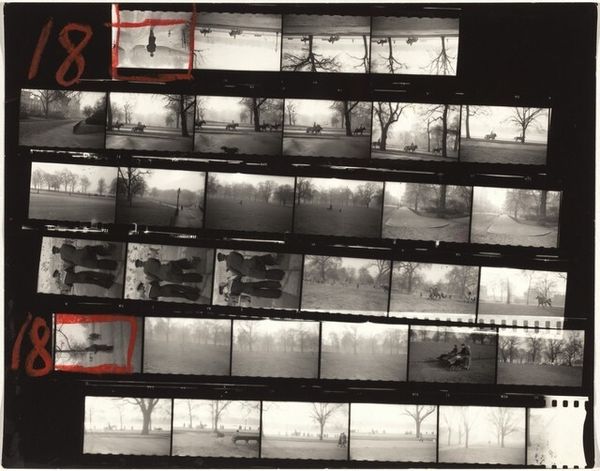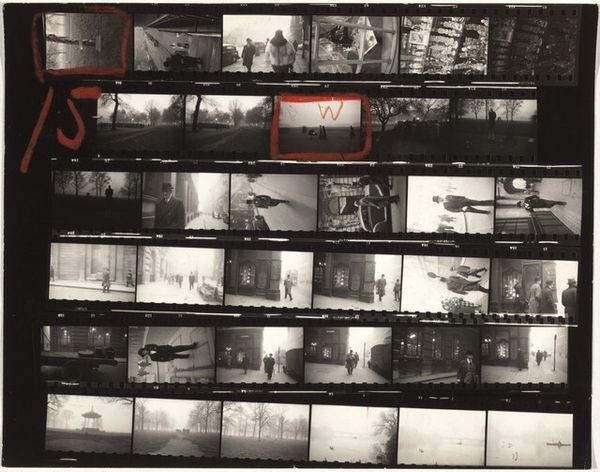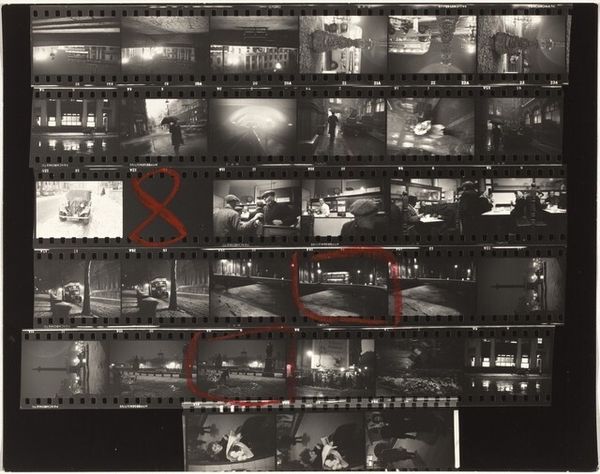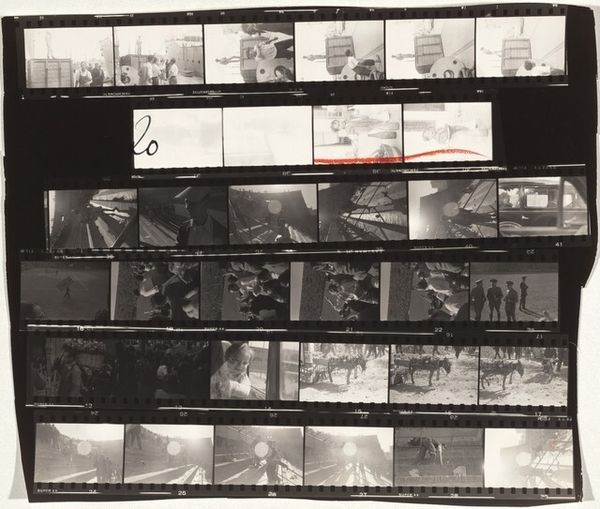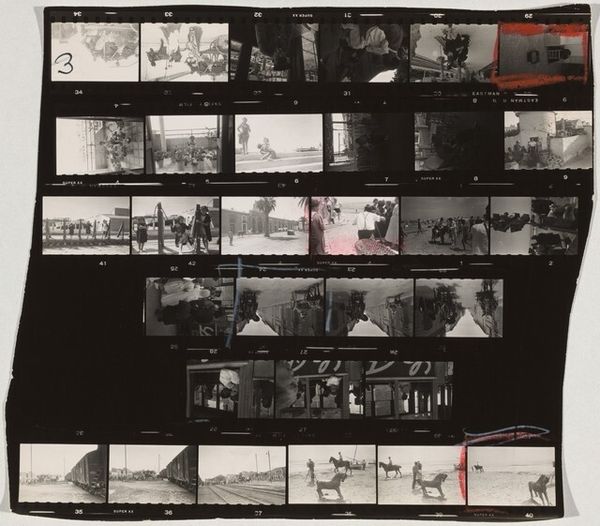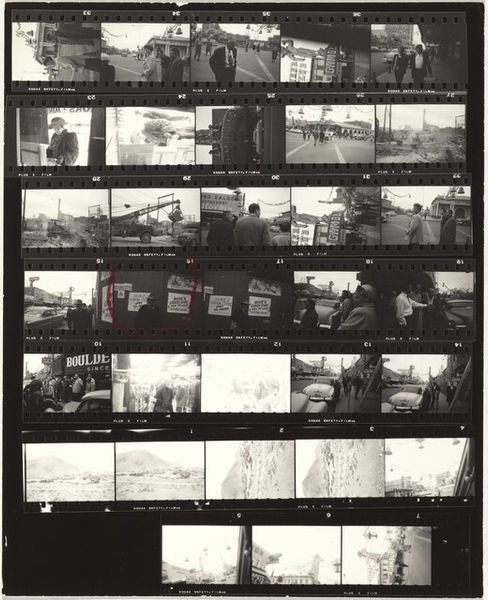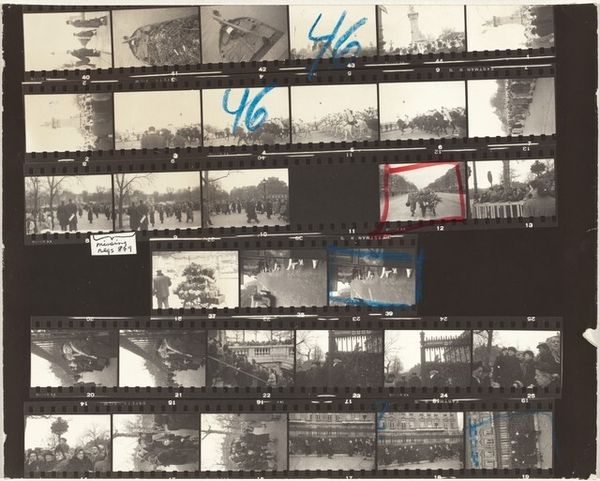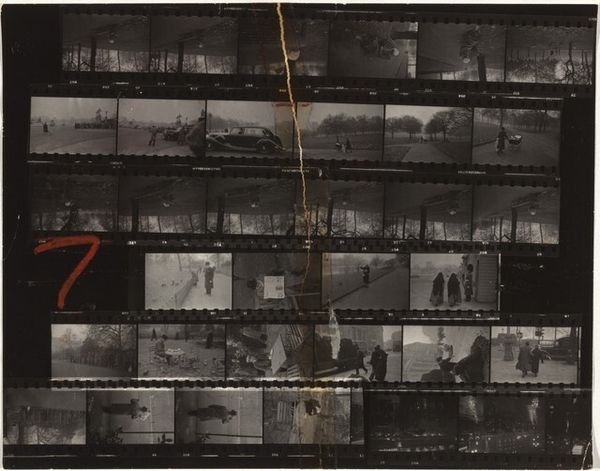
Dimensions: overall: 20.3 x 25.8 cm (8 x 10 3/16 in.)
Copyright: National Gallery of Art: CC0 1.0
Curator: This gelatin silver print by Robert Frank, titled "London 28" and created between 1952 and 1953, offers us more than just a series of images. Editor: Exactly! At first glance, it just looks like a contact sheet of images, capturing both London’s parks and city streets. There's almost a haphazard feel to the layout. How do you interpret this choice? Curator: Think of the darkroom as Frank’s workshop. This contact sheet, with its indexical relationship to the original negatives, becomes a critical object itself. We see not just the final images, but the process of selection and creation. It highlights the labor involved, moving photography from purely artistic expression toward a form of crafted documentation. The 'making of' becomes important. Editor: So, by presenting the raw materials of photography—the contact sheet itself—Frank is deliberately blurring the lines between high art and everyday, utilitarian processes? Curator: Precisely. How does that material context shift your understanding of the subject matter, those London scenes? What do you make of their inclusion in a work of art that displays its manufacturing origin so plainly? Editor: I guess I hadn’t thought of the urban scenes this way. They’re almost incidental, less about specific places and more about a record of photographic activity, right? Curator: It shifts the focus, doesn't it? The photograph becomes less about picturesque London and more about exploring the very act of seeing and producing images of it, the sheer material existence of urban representation. Editor: I see it now! Thanks, I’ve never considered the labor and the manufacturing side when looking at photographs before, now I have something new to look for in other art pieces. Curator: A constant process of uncovering meaning through materials!
Comments
No comments
Be the first to comment and join the conversation on the ultimate creative platform.
